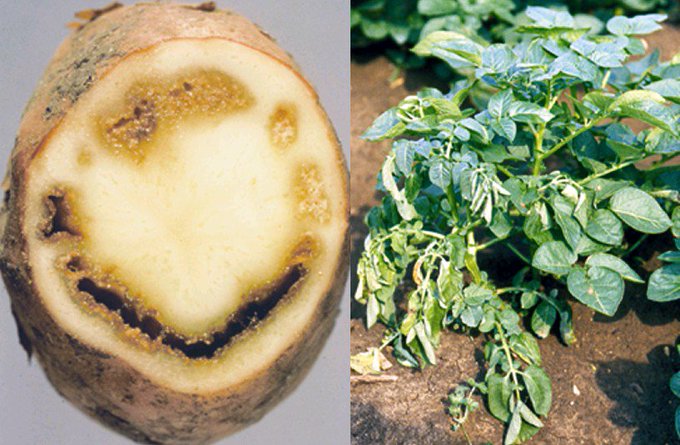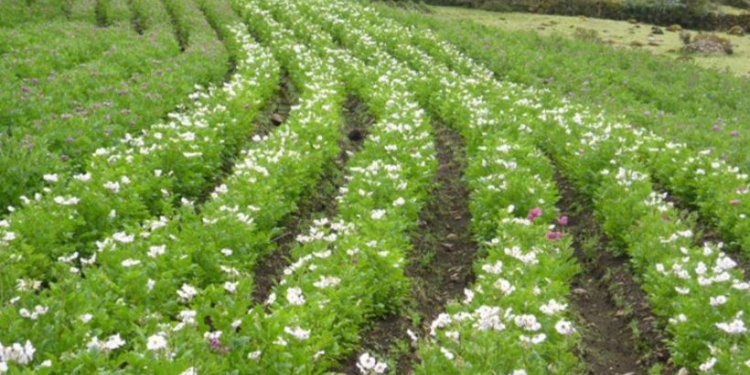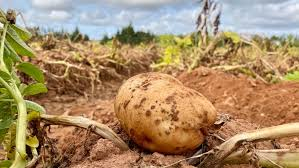The sanitary strategy begins with the soil work and the choice of the potato variety. It is convenient to analyze possible problems with the rains that have fallen until late in the summer, and point out possible solutions
The start of the potato has started timidly in Castilla y León, but it still seems appropriate to review some of the health problems that may arise in relation to the crop. The plant requires continuous monitoring to detect any anomaly in its development as soon as possible and act accordingly. In addition to the visual control of the plants, it is advisable to carry out tastings to check the condition of the tubers.
It is also very important to pay attention to the publication of notices and phytosanitary bulletins in the area. On the website of the Ministry of Agriculture, Livestock and Rural Development of Castilla y León it is possible to find out about the threats and recommendations of different crops. Unfortunately, the information bulletins for the potato sector in Castilla y León are not updated as often as necessary. It is also regrettable that potato cultivation is not included within the Castilla y León Phytosanitary Surveillance Network.
BEFORE THE DETECTION OF PROBLEMS
Healing actions are applied to a diseased crop, so it has the main disadvantage that damage has already been done to the potato crop. It is the resource that must be used as diligently as possible after detecting the problem to minimize damage. Detection of fungal damage has to be dealt with quickly so that the disease does not spread rapidly through the crop.
There are many options within the catalog of fungi (penetrating and systemic) capable of penetrating the plant and selectively eliminating invading fungi. Despite eliminating the fungi from the crop, the damage caused to the plants will not be possible to regenerate. Therefore, if the percentage of plant cover affected is high, the crop yield will be irretrievably affected. If the fungal attack has reached the tubers, they will not be able to recover either.
Unfortunately, sometimes it is not possible to carry out fully effective actions and it is only possible to focus on slowing down the speed of the potato disease’s progression. This is the case of viral diseases such as coiling virus (PLRV), severe mosaic virus (virus A), light mosaic virus (virus X), or striae disease (virus Y). The presence of virus in the culture is manifested only in plants.
The coiling virus, the one with the highest incidence, is very easy to identify since the leaflets are rolled along the main vein, it presents marginal and interveinal chlorosis, and its touch becomes rigid. Symptoms related to the mosaic virus produce a translucent discoloration of the leaves and in the most severe cases, the leaf edge is deformed. The Y virus has very articular symptoms: the leaf edge and the stems are filled with longitudinal streaks or points.
The progression of viral diseases is rapid and irreversible. The way to fight against its advance focuses on eliminating the affected plants and applying an insecticide treatment, since the spread of the virus is carried out by aphids and aphids. Eliminating the vectors of contagion will slow the spread of the disease.
Insect pests not only contribute to the spread of viruses, but also cause direct damage to the potato crop. The attack of insects such as caterpillars and beetles produce defoliation in the plants. Others, such as wireworms (also known as doradilla, pin, canutet, or auger), donut, or nematodes, attack tubers directly.
In general, the farmer has an important variety of efficient insecticides. But not all pests are equally easy to eliminate. Wireworm attacks are quite difficult to defeat and in addition, pest remnants can remain in the soil for 5 years. Therefore, it is very important to do intense tillage in the hot months and if possible, a solarization. Recommendations to eliminate a wireworm infestation are the use of specific insecticides and the installation of corn and wheat traps .
It has also been shown that the combination of other plant species (such as flowers, aromatic plants, or fruit trees) is a very effective way to fight against different pests. For example, species such as honeysuckle, lupine, foxglove, peppermint or nettle have a repellent effect on aphids. Marigolds, in addition to repelling aphids, are good at driving away nematodes. Fighting the nematode is also difficult and financially expensive.

There are nematicides but they do not have a high success rate, so it is highly recommended to combine the treatment with other physical techniques such as biofumigation and solarization. It is always advisable to take as many preventive measures as possible to avoid infections.
Regarding the bacterial threat, we emphasize that it must be adequately controlled from its origin because, as with fungi, with high levels of heat and humidity it is capable of multiplying and spreading rapidly, seriously affecting the crop. There are no effective phytosanitary tools for the fight against bacteriosis, since the use of antibiotics is not authorized.
The way to try to stop the progression of this disease is by using Sodium Chlorite Hypo and eliminating the plants that are affected. It is also often used, although its effectiveness is limited, the use of copper-based compounds since it acts as a bactericide.
The three diseases triggered by bacteria that are most frequently detected are black foot, soft rot, and vascular disease. The first one is a disease that initially attacks the lower part of the stem. The damage spreads through the plant while hindering the exchange of substances between the aerial part and the underground part.
In case of late disease, the potato tubers could be harvested normally, without having been affected by the disease. But if contagion occurs in the early stages of the crop, it will not be able to compleweerte its development cycle normally. Soft rot is more difficult to detect early than blackfoot as the symptoms displayed by the plant are not as obvious.

In some spots stalk may detect the time extend to the time that the yellowing and dying plant. The tubers are affected by decomposing as a result of bacterial infection. In the case of vascular disease, the bacteria attack the inside of the stems, making the circulatory system difficult without externally showing any symptoms. To detect this problem, it is necessary to cut the stem lengthwise and check that the conductive vessels are darkened.
Common scabies or scab are also a consequence of bacterial attack. In this case the plant is not affected, the damage is concentrated exclusively on the potato tubers. Phytosanitary products do not offer any possibility of fighting against this problem, therefore, the general preventive measures that we have previously discussed are the only possible recommendation against this disease.








